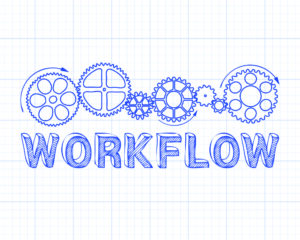As a Canadian employee, you may have encountered the TD1 form at one time or another. The TD1 form is a crucial document that helps the Canada Revenue Agency (CRA) determine how much income tax should be deducted from your paycheque.
Let’s start with the employee’s responsibility.
What is the point of the TD1 form?
When you start a new job, your employer is required to provide you with a TD1 form. This form asks you to provide some personal information, including your name, address, and Social Insurance Number (SIN). You will also need to indicate your federal and provincial tax exemptions, which determine how much tax your employer will withhold from your paycheque.
The TD1 form allows you to claim certain deductions and tax credits. If you are eligible for these deductions, you can indicate them on your TD1 form, and your employer will adjust the amount of tax they withhold accordingly.
By filling out the TD1 form accurately, you can ensure that the correct amount of tax is deducted from your paycheque throughout the year. This can help you avoid owing a large tax bill at the end of the year or receiving a large tax refund.
5 common mistakes that people make when filling out the TD1 form
- Not updating the form: If you have changes to your personal information or income, it’s important to update the TD1 form to reflect these changes. Failing to update the form can result in the incorrect amount of tax being withheld from your paycheque.
- When you have two jobs at the same time, it’s important to ensure that you are not claiming the same deductions or tax credits on both TD1 forms. For example, if you claim the Basic Personal Amount on one form, you should not claim it again on the other form.
- Forgetting to claim deductions or tax credits: The TD1 form allows you to claim deductions and tax credits, such as the Canada Employment Amount or the Public Transit Amount. Forgetting to claim these can result in you paying more tax than necessary.
- Incorrectly claiming exemptions: When filling out the TD1 form, you will need to indicate your federal and provincial tax exemptions. It’s important to ensure that you are claiming the correct number of exemptions, as this determines how much tax is withheld from your paycheque.
- Not seeking advice: If you’re unsure about how to fill out the TD1 form or have questions about your tax obligations, it’s always a good idea to seek advice from a tax professional or the CRA.
Now, let’s look at it from the employer’s side:
Employer’s obligation to have the employee fill out the TD1 form
As an employer in Canada, it is your legal obligation to ensure that your employees fill out the TD1 form accurately and on time. This is because the CRA uses the information provided on the TD1 form to determine how much tax should be withheld from each employee’s paycheque.
If an employer fails to ensure that their employees fill out the TD1 form correctly, they may be subject to penalties or fines. Additionally, failing to withhold the correct amount of tax from an employee’s paycheque can result in the employee owing a large tax bill at the end of the year or receiving a large tax refund.
By fulfilling your obligation as an employer to ensure that your employees fill out the TD1 form accurately, you can help your employees avoid unexpected tax bills or refunds. This can also help to build trust and a positive relationship between you and your employees.
The risk for an employer of not having TD1 forms filled out by their employees is that they may not be withholding the correct amount of tax from their employees’ paycheques. This can result in potential penalties and fines from the CRA for not remitting the correct amount of payroll deductions, and may also cause frustration and financial hardship for employees.
In addition, failing to have TD1 forms filled out accurately and on time can damage the trust and confidence that employees have in their employer. This can lead to low employee morale, decreased productivity, and higher turnover rates.
It’s important for employers to fulfill their obligations to have employees fill out TD1 forms accurately and on time, as it ensures compliance with tax laws and helps maintain positive relationships with employees. Employers who are unsure about their obligations or need assistance with payroll and tax compliance may benefit from seeking the advice of a tax professional or HR consultant.
Employers are required by law to have a current TD1 form on file for each employee, so it’s important to ensure that the form is up-to-date and accurate. Employers may want to remind employees to review and update their TD1 form annually, or provide them with the necessary forms and guidance to do so.
4 common mistakes employers make
- Failing to provide TD1 forms to employees: Employers are required by law to provide TD1 forms to employees and to ensure that they are completed accurately.
- Failing to keep TD1 forms up-to-date: Employers are required to keep a current TD1 form on file for each employee to present to the CRA if requested.
- Failing to withhold the correct amount of tax: Employers are responsible for ensuring that the correct amount of tax is withheld from employees’ paycheques.
- Giving tax advice: Employers should avoid giving specific tax advice on claiming deductions or credits because tax laws are complex and can vary based on personal circumstances.
- Communication: Employers must communicate with employees about their tax obligations to avoid misunderstandings, errors, and issues with the CRA.
A Two-way Street: Employers and Employees are Both Responsible
If the CRA determines that the employer did not withhold the correct amount of tax, the employer may be subject to penalties and interest charges for failing to remit the correct amount of payroll deductions. In some cases, the CRA may also seek to recover the unpaid taxes directly from the employer.
However, if the employee did not accurately complete their TD1 form, they may also be held responsible for any additional taxes owed. In such cases, the CRA will work with both the employer and the employee to resolve the issue and ensure that the correct amount of tax is paid.
In summary, the TD1 form is an essential document that helps the CRA determine how much income tax should be deducted from your paycheque. By filling out the TD1 form accurately, you can ensure that the correct amount of tax is deducted from your paycheque throughout the year. As an employer, it is your legal obligation to ensure that your employees fill out the TD1 form accurately and on time. By fulfilling this obligation, you can help to build trust and a positive relationship with your employees while avoiding penalties or fines.



